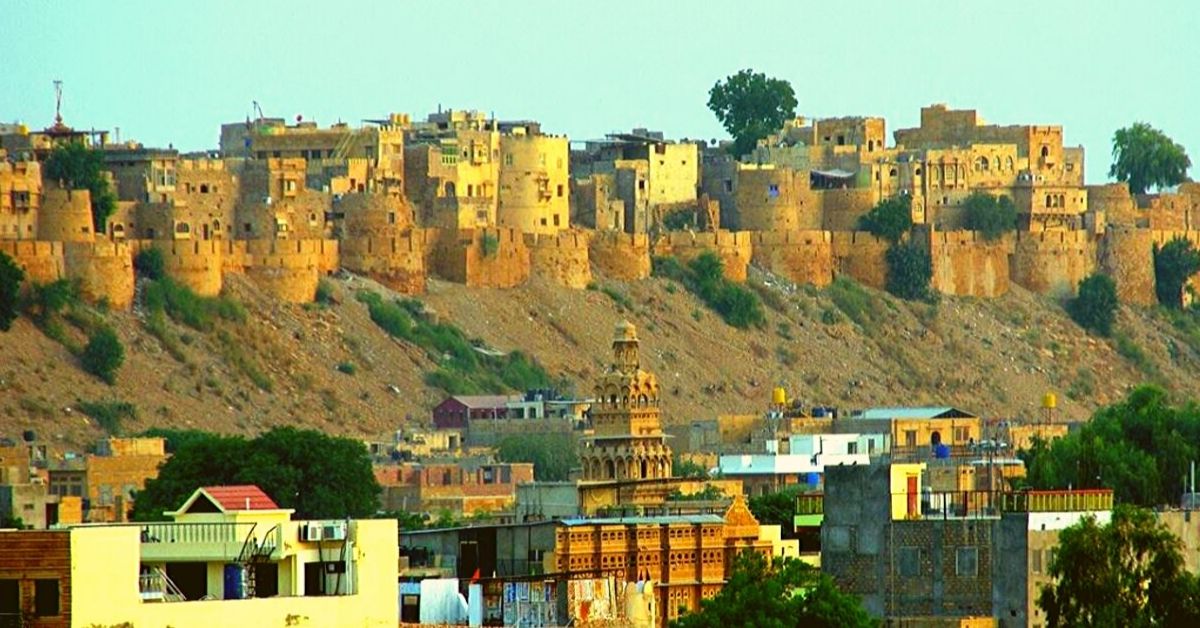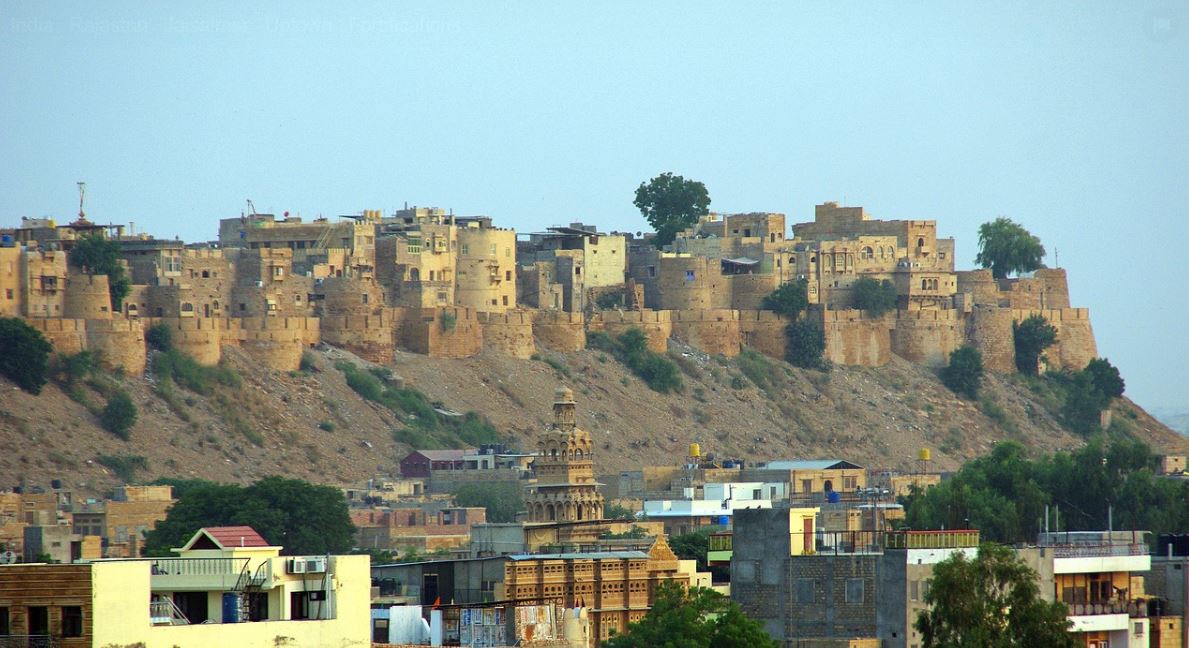India’s Last Inhabited Fortress in Rajasthan has 4000 People Living Rent-Free In It!
For more than 800 years, hundreds of families have lived inside this glorious desert citadel that's also a UNESCO world heritage site. Read on to find out why and how!

Once upon a time, there lived a group of benevolent kings in a ‘Golden City’ who were so impressed by the services of their subjects, that they decided to gift a 1,500 feet long fort to them.
For the next hundreds of years, the descendants of those families would reap the benefits of their ancestors’ actions by residing in the glorious desert citadel for free!
This sounds like a sweet happily-ever-after tale that your grandparents must have told you, while you were tucked in bed, isn’t it?
From a jewellery set made of bamboo to earrings with hand pressed flowers, check out these gorgeous accessories that are good for the environment too.
Well, what if we told you that this is a true story, and the families currently residing in the castle without paying any rent is the biggest proof?
The fort, which was built in 1156 by the King Rawal Jaisal, is the famous Jaisalmer Fort in Rajasthan. A UNESCO heritage site, it is the only living fort in the world.

In other words, unlike other forts which are either abandoned or converted into posh hotels, the Jaisalmer fort is standing strong even today, and approximately 4,000 progenies of the castle’s earliest inhabitants continue to live inside its fortified walls, earning an income through tourism.
The fort is 250 feet tall and was built at the height of 25 stories from the dusty landscape. The walls are made from yellow sandstone bricks, and the fort has 99 bastions.
The roofs of the houses are covered with three feet of mud that keep the interiors cool when the temperature soars. Another feature that indicates an environment-friendly approach in the architecture are the jaalis (perforated stone) and jharokhas (a type of overhanging enclosed balcony) in the houses. They allow the breeze to pass smoothly.

The history of how tourism flourished inside the walls of the gigantic fort dates back to the sixteenth century. The fort became one of the essential stops on the Silk Road trading route that connected the West with Asia. From spices, teas, silks to valuable stones, the travellers would carry their goods and halt at the fort.
The locals gained tremendous profits from this exercise and locals merchants even went on to build havelis (mansions) for the outsiders to live in comfort.
Even today, after so many generations, the fort continues to be a major tourist attraction with restaurants, and rows of indigenous products like handicrafts, handbags, dupattas and sarees cramped in the narrow lanes.

Even though the families are each other’s competitors when it comes to doing business, they are always there for each other during joyous occasions or dismal times like funeral, much like any other family.
For example, the family of a prospective bride or groom announce the wedding dates and place by hanging a painting describing the details outside their house. The painting is like a formal invitation card to the members of the community.
“The entire fort is one family,” Vimal Kumar Gopa, a resident tells the BBC. “The boundaries begin and end with the main gate known as Akhrey Prol that separates the town from us. Whether it is a marriage or a death, all of us come together to observe it.”

Echoing Gopa’s words, Jitendra Purohit, another resident says, “A couple of years [ago], when my mother had a heart attack, neither my brother [nor] I was at home, but my neighbours took her to the hospital. This ‘harmony’ is what I like most about living here, and it has always been this way in this community for centuries.”
The golden fort has witnessed several rulers, from the Mughals, Rajputs to the British Raj and has survived harsh weather conditions like heavy rainfall and earthquakes. Yet, it stands strong in the never-ending Thar desert.
Featured Image Source: Pixabay
Also Read: These Low-Cost Eco-friendly Rajasthani Homes Can Survive Floods & Earthquakes!
(Edited by Gayatri Mishra)
Like this story? Or have something to share?
Write to us: [email protected]
Connect with us on Facebook and Twitter.
If you found our stories insightful, informative, or even just enjoyable, we invite you to consider making a voluntary payment to support the work we do at The Better India. Your contribution helps us continue producing quality content that educates, inspires, and drives positive change.
Choose one of the payment options below for your contribution-
By paying for the stories you value, you directly contribute to sustaining our efforts focused on making a difference in the world. Together, let’s ensure that impactful stories continue to be told and shared, enriching lives and communities alike.
Thank you for your support. Here are some frequently asked questions you might find helpful to know why you are contributing?


This story made me
-
97
-
121
-
89
-
167













